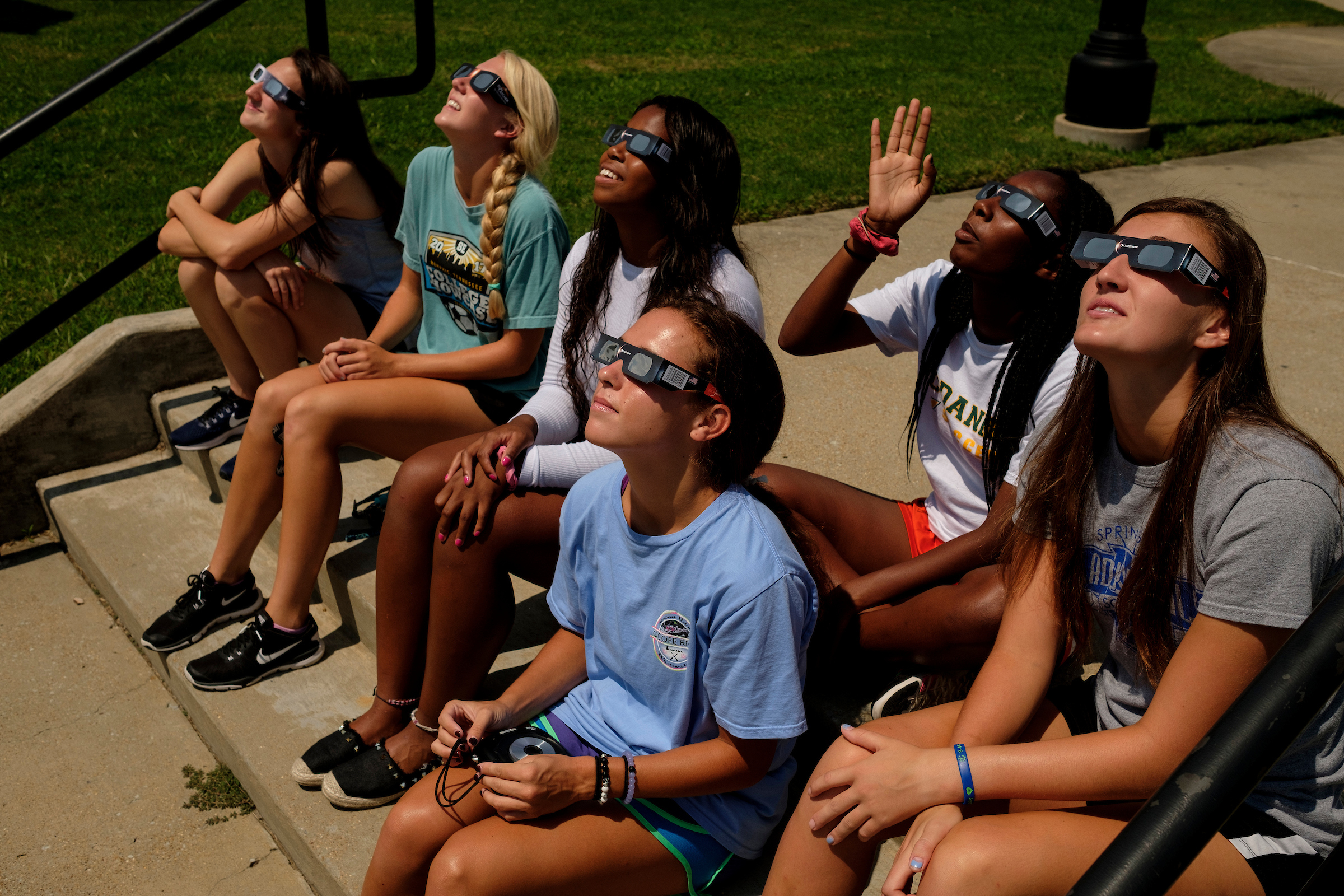An annular eclipse will take place this Saturday, and most of the people in the continental United States will see at least a partial eclipse.
The path of annularity for the eclipse will begin in the United States in Oregon and exit into the Gulf of Mexico in south Texas. It will also cross the Yucatan Peninsula of Mexico, Central America and northern South America.
The difference between a total solar eclipse and an annular eclipse is how large the moon appears as it passes in front of the sun, according to Dr. Lionel Crews, an associate professor of physics at the University of Tennessee at Martin.
“There are actually three different kinds of eclipses,” he said. “The most common one is a partial eclipse, where the moon’s disk ― the circle that the moon makes in the sky ― doesn’t line up with the solar disk, their centers miss each other, so you just get a little ‘bite’ cut out. A total eclipse is where their centers line up and the moon, for a short period of time, will block out the light from the photosphere of the sun completely, although you can still see the sun’s atmosphere.
“An annular eclipse occurs because the moon’s orbit is not a perfect circle and the Earth is not in the exact center of the moon’s orbit, so sometimes, the moon is farther away and sometimes, it’s closer. When it’s closer, that’s when you get the total eclipse, and when it’s farther away, you get an annular eclipse; it’s just not big enough to completely cover the sun.”
During a total annular eclipse, a ring of the sun ― often called the “ring of fire” ― can be seen around the moon’s disk. An annular eclipse gets its name from the Latin word “anulus,” meaning “ring.”
What people in West Tennessee will see is a partial solar eclipse. In Martin, the eclipse will begin at 10:34 a.m. and the maximum coverage will take place at 12:01 p.m., according to an interactive map provided by xjubier.free.fr. In Martin, a maximum of 55.9% of the sun’s disk will be covered by the moon. The eclipse will end at 1:33 p.m.
“What we’ll see in Martin is a ‘bite’ taken out of the sun, giving it a kind of Pac-Man look to it,” Crews said. “Even at 55%, you’re probably not going to notice it get a lot dimmer, especially since we’re used to having clouds and not having clouds.”
Crews said that looking at any solar eclipse or looking toward the sun in general is dangerous unless wearing sufficiently protective glasses.
“If you got eclipse glasses during the eclipse in 2017, you need to wear something like that,” he said. “However, if you use those same glasses from 2017, over that time, they may have gotten scratched, which could let some sunlight in ― probably not enough to be dangerous, but just be careful and make sure that they haven’t degraded.
“Just looking at the sun won’t make you go blind. The issue is: Because there’s this eclipse going on and people want to see it, they stare at the sun for a period of time. That’s what causes the damage. What people can do is, one day, put those glasses on and kind of glance up at the sun and see if it looks about the same as it did during the prior eclipse or if you can look without any pain or discomfort at all.”
Crews will be at Discovery Park of America in Union City during the eclipse, doing a presentation about the eclipse called “Solar Eclipse Party” that will run from 10 a.m. to 2 p.m.
“We’re going to have two solar telescopes set up,” he said. “One of them is a true solar telescope that has a filter designed to look at the sun. The other one is a normal telescope, and we’re going to put a Mylar filter in front of it to knock down the light.”
A limited number of solar eclipse glasses will be available in the gift shop. There will also be several different, alternate projectors available in our great lawn, from make-your-own paper ones to a solar scope.
Other activities at the show include a solar car race, solar oven S’Mores, stomp rockets, sun print art and eclipse cups sliders.
The price of admission to Discovery Park of America is $21.99 for adults and $14.99 for those 4 to 17. Children 3 and under get in for free. There is no additional charge for the Solar Eclipse Party.
More information about Discovery Park of America can be found at www.discoveryparkofamerica.com. An interactive map of the annular eclipse is provided by xjubier.free.fr where you can click on any location to get local eclipse information.
Those who have sufficiently shaded solar eclipse glasses will want to hold on to them for another six months, as a total solar eclipse will again cross the United States as it did on Aug. 21, 2017. The next total solar eclipse will take place on April 8, 2024. As it did in 2017, the path of totality will pass close to this area, clipping the far northwestern corner of Tennessee, close enough for Martin to see 99% of the solar disk covered by the moon.
###








